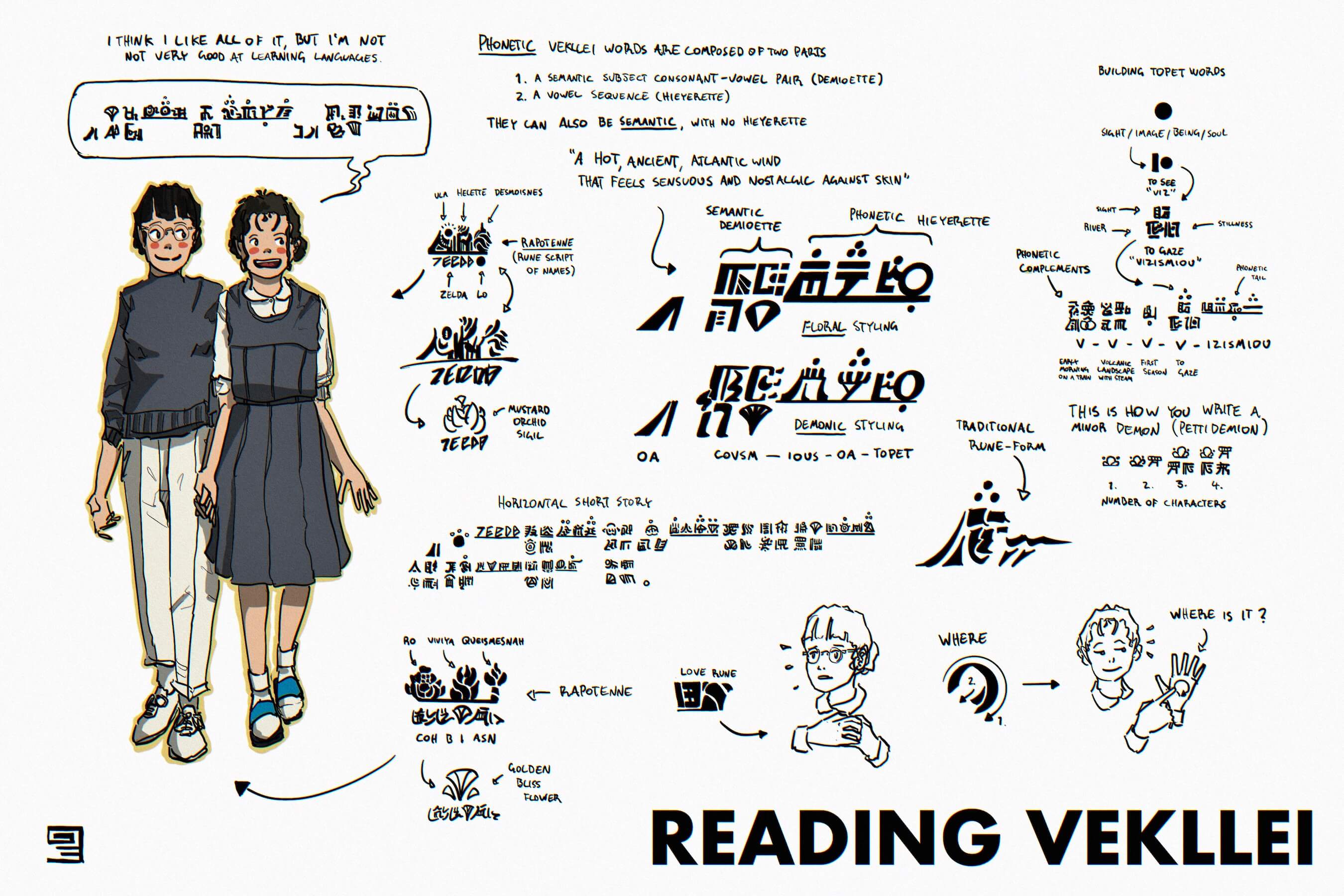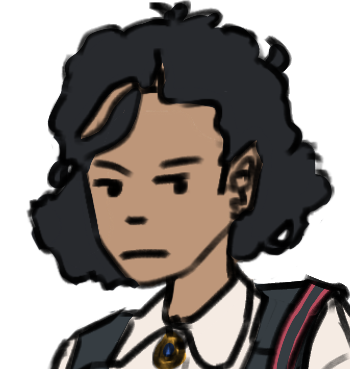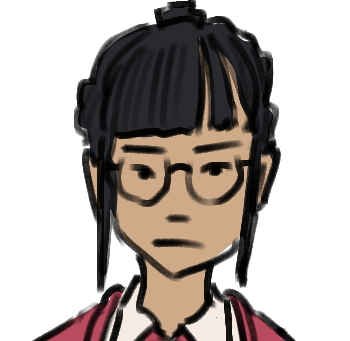NEW Story: School Photo
How to Read Vekllei

This is an unusual post in that, a) it’s particularly text-heavy and desaturated, and b) much of its material is already available on an existing wiki article on my website.
The above article covers the language conceptually in pretty much all the detail you’d ever want. So, despite the heavy use of labels and text, this picture is particularly concerned with the literal appearance and structure of the Vekllei written language, called Topet.
As an aside, a basic overview of the language was given in this post. Please check it out to make sense of some of the terminology used here.
The basic process of Vekllei’s main writing script (Topet) is this:
- Nouns and verbs are modified extensively by associating their subject with other pictographic characters, which have no phonetic value except for the core “principle” character. For example, an “emu” might be tall, or “running” may be breathless. This grouping is called a “minor demon”.
- The way these groupings look depends on how many associated characters you’re using. The principle can be written alone in the centre of a space. With two, they’re arranged side-by-side. With three, the principle sits on top of the other two in a triangular shape. With four, they become a quadrant.
- Sometimes, these groupings are enough. If everyone already knows what the principle characters means and how to vocalise it, you can leave it alone as a pictograph — a literal picture, with meaning modified by the characters of its group.
- Quite often, however, you have to teach the reader how to say it. The minor demon lends the initial sound, and the rest have to be written in superscript next to it, as phonetic “helper” characters called hieyerette. These aren’t used as pictures, they’re used to help spell it out.
Of course, Vekllei has several verbal, non-verbal, signed and written languages. They don’t all work like this. Rapotenne is basically pictographic and is very, very old. It’s mostly used for names and to talk to spirits. It’s never used for conventional writing. Indeed, for signatures, most use their sigils instead.
So this post isn’t really intended to help you understand how the Vekllei language works, since the language is very complex and better served by the wiki article linked above. This is a showcase of style — the way the Vekllei language looks and feels on paper.
You can see an example of Topet styling in this picture.
- Modern, sans-serif FLORAL STYLING is most commonly used today in print, as part of the simplification and standardisation of characters. It’s designed to be easier to write for immigrants, who arrived in Vekllei by the millions after the war.
- Traditional, ornamented DEMONIC STYLING carries the traditional line weights and decoration of prewar Topet, and is still used in small print like novels for its better legibility.
Most fonts in Vekllei follow in either of these two traditions.
Finally, this infographic makes clear the basic flow of the Vekllei language, which transforms most words into complicated, sentence-like concepts layered with designed, unique meaning. “Minor Demons” (the character groups) are not just used for poetry but in fact for all writing, as is the nature of Vekllei communication.
Like much else in the country, a lot of the Vekllei way of thinking is deeply conceptual and abstracted, and rarely ventures into modern literalism. This is a feature built into the language, and it affects the Vekllei understanding of many cultural artefacts. For example, the Vekllei language is not really built to describe specific places — instead, the feeling and experience of mountains/beaches/streams is substituted in its place, quite literally by the pictographic nature of Topet.
When you read Topet, you’re not just sounding out a phonetic character — you are looking at a picture of that concept, in a transcendental fashion that prohibits specificity. This sort of indigenous conceptualisation deserves a post of its own, but hopefully this graphic has helped introduce you to the basic cadence and features of the written Vekllei word.
Let me know, as always, if you have any questions.

